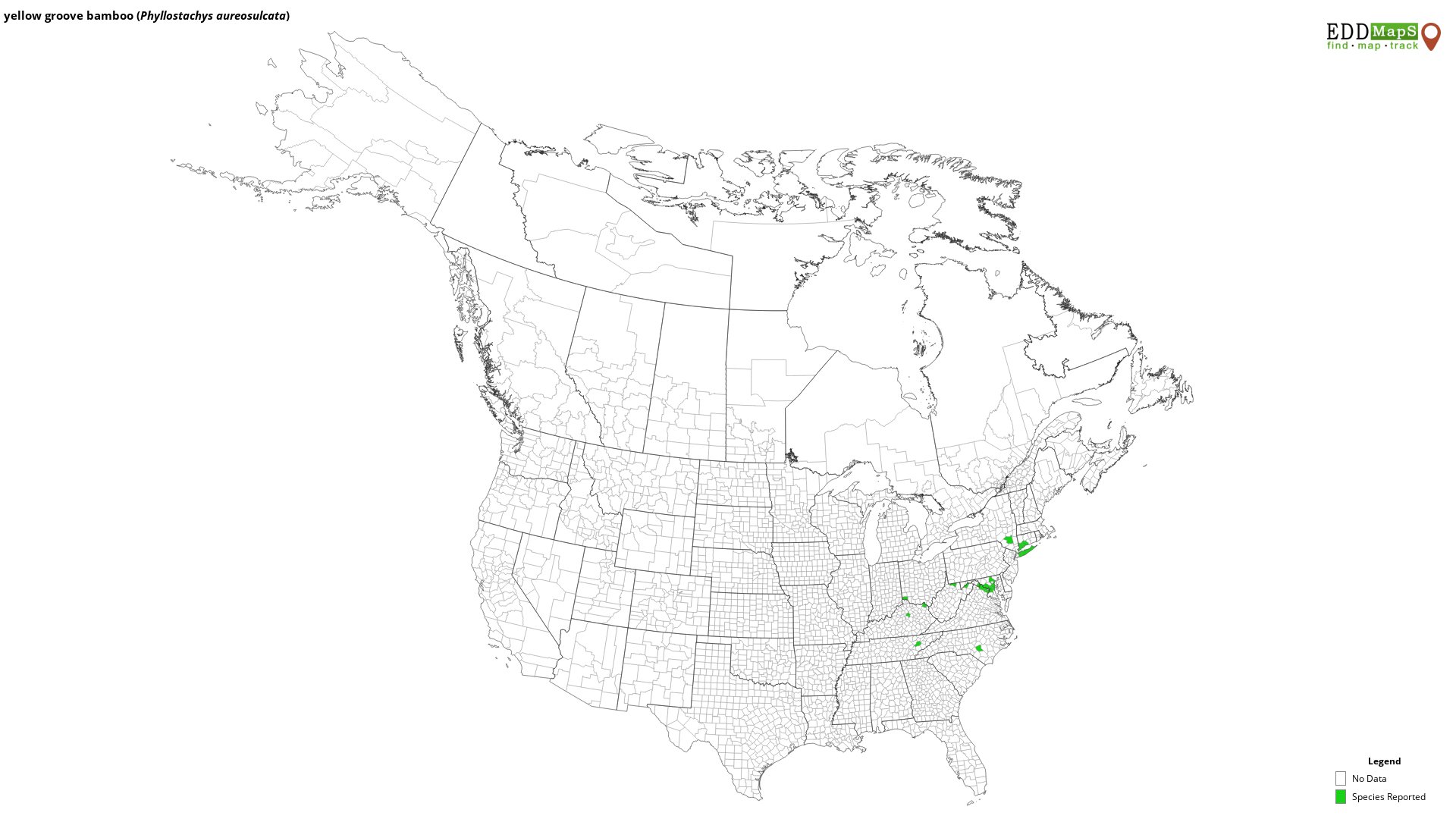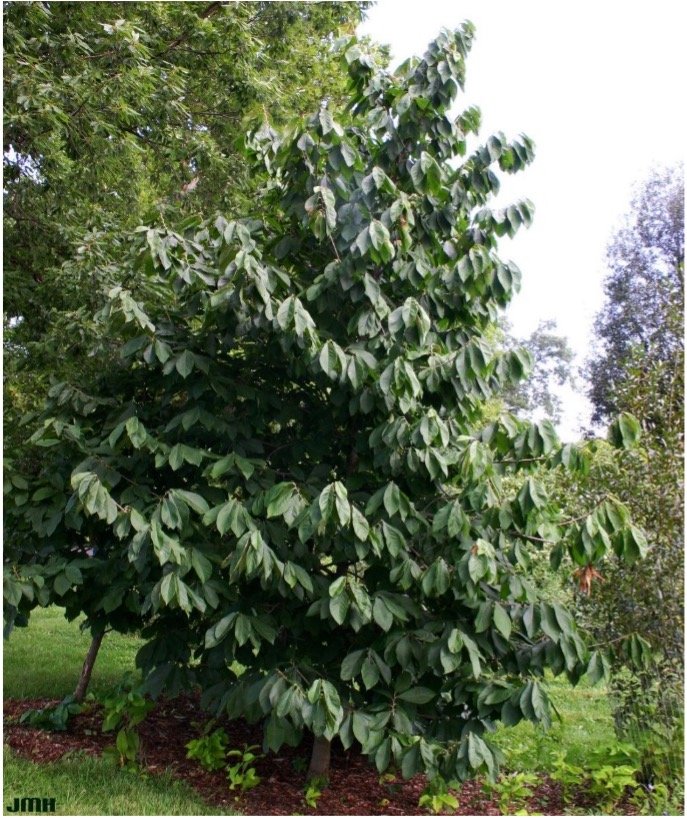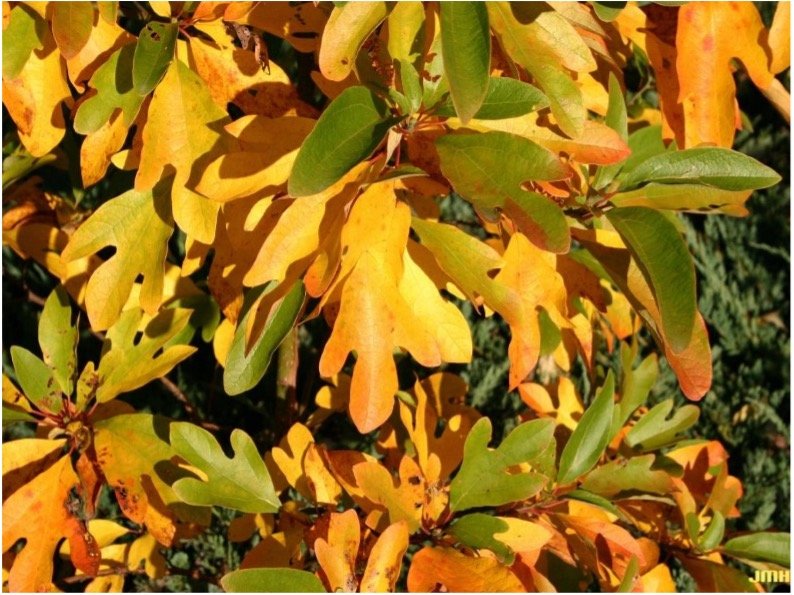Indiana Invasive Species Awareness Week: What Plant is This?
SICIM Email
In honor of Indiana Invasive Species Awareness Week, we are highlighting some lesser known species that you need to be on the lookout for! These species have shown invasive tendencies but we don’t have a clear picture of their distribution in Indiana. If you see any of them growing in natural areas, be sure to report them in EDDMaps so that we can get a clearer understanding of their location and spread.
By: Mandi Glanz
Do you know what plant this is?
If you said yellow groove bamboo, you are correct!
We’ve highlighted this plant a couple of time over the years, and most recently it was our Invasive Plant of the Month for January 2022, so we thought we’d quiz you! Yellow groove bamboo (Phyllostachys aureosulcata) is a species of running bamboo that is invasive to this area, meaning it is non-native and it causes ecological harm to our natural landscapes. Yellow groove bamboo is one of the fastest growing plants on Earth; it can quickly spread and form monocultures in natural areas that outcompete native plant species, decrease biodiversity, and negatively impact wildlife habitat. It is important that we learn how to identify this invasive plant, monitor for its presence, and report infestations using tools such as EDDMapS.
Yellow groove bamboo is native to China. It was first introduced into the United States in 1908 for horticultural uses. Yellow groove bamboo as well as other species of bamboo (Phyllostachys spp.) have also been introduced into North America for timber production. Although yellow groove bamboo is still legally sold in Indiana, it is regulated at the state and/or community level in several east coast states including Ohio and New York.
Yellow groove bamboo is a woody, perennial monocot in the Poacea (grass) family. The culm, or the stalk, is jointed and hollow. A key identification feature of this species is a yellow sulcus, or a groove, located on every other internode of the culm. The leaves are olive-green, lanceolate, pointed, hairy at the base, and can get up to seven inches long. Yellow groove bamboo is fast growing, and it can reach a height between twelve and eighteen feet. This species spreads rapidly via an underground rhizome system. Within riparian areas, rhizomes can be carried downstream and create new infestations. Also, yellow groove bamboo spreads most rapidly in moist soils.
To prevent infestations, do not plant yellow groove bamboo or other invasive bamboos. If yellow groove bamboo has been found, manually remove the plant ensuring proper disposal of the rhizomes. Chemical treatment using glyphosate can also be used. When chemically treating invasive species, always use pesticides wisely, and always read the entire pesticide label carefully. If a stream, pond, or other wetland area is observed, used chemicals that are approved for aquatic areas. Frequent monitoring is crucial when managing yellow groove bamboo. Ensure not treating giant cane (Arundinaria gigantea), a species of bamboo that is native to the United States.
Native alternatives that can grow in colonies and provide a natural privacy screen include:
These may not fill in as quickly or as thick as bamboo, but they will do the job and the wildlife will thank you! For more ideas and to learn more about native landscaping, visit Landscaping with Native Plants — State of Indiana Cooperative Invasives Management (sicim.info).
If you find yellow groove bamboo outside of a landscape setting, please report it via EddMaps either through the app or their website: www.eddmaps.org/indiana. While this species has been found in landscaping throughout much of southern Indiana, right now it has only been reported escaping in Monroe and Tippecanoe County, so keep your eyes peeled for Yellow Archangel escaping into natural areas as you get outdoors this spring and do not forget to report it!
If you have been wanting to use EDDMaps but haven’t had the chance to learn, here’s a virtual event coming up to hone your skills:
North American Invasive Species Management Association (NAISMA): 2022 EDDMapS Summit, March 23rd
IMPORTANT: The pesticide label is the law! When using any chemical control, always read the entire pesticide label carefully, follow all mixing and application instructions and use all personal protective gear and clothing specified. Contact the Office of Indiana State Chemist (OISC) for additional pesticide use requirements, restrictions or recommendations.
CABI: Invasive Species Compendium: https://www.cabi.org/isc/datasheet/42069
EDDMapS. Early Detection & Distribution Mapping System, Yellow Groove Bamboo: https://www.eddmaps.org/species/subject.cfm?sub=55473
Field Guide to Identification of Phyllostachys Invasive Running Bamboo Institute of Invasive Bamboo Research: https://www.researchgate.net/publication/329558826_Field_Guide_to_Identification_of_Phyllostachys_Invasive_Running_Bamboo_Institute_of_Invasive_Bamboo_Research
USDA NRCS Plant Guide, Giant Cane Arundinaria gigantea: https://www.nrcs.usda.gov/Internet/FSE_DOCUMENTS/nrcs144p2_002413.pdf
Invasive.org, Yellow Groove Bamboo: https://www.invasive.org/browse/subinfo.cfm?sub=55473
Invasive Plants in Pennsylvania, Golden, Yellow Groove & Giant Timber Bamboo: elibrary.dcnr.pa.gov/GetDocument?docId=3549860&DocName=Bamboo.pdf
Missouri Botanical Garden: Phyllostachys aureosulcata: www.missouribotanicalgarden.org/PlantFinder/PlantFinderDetails.aspx?taxonid=285361&isprofile=1&basic=yellow%20groove
New Invaders of the Northeast and Northcentral: https://bugwoodcloud.org/resource/pdf/FHTET-2017-04_New%20Invaders_NE.pdf
Weed Risk Assessment for Phyllostachys aureosulcata McClure (Poaceae) – Yellow Groove Bamboo: https://www.aphis.usda.gov/plant_health/plant_pest_info/weeds/downloads/wra/Phyllostachys_aureosulcata_WRA.pdf
Photo credits:
Stalks and infestation of yellow groove bamboo in winter: Caryn Rickel, Institute of Invasive Bamboo Research, Bugwood.org
Yellow groove bamboo infestation (green): Paul Langlois, Live Botanical Collections, USDA APHIS PPQ, Bugwood.org
Distribution maps Courtesy of EDDMapS. 2021. Early Detection & Distribution Mapping System. The University of Georgia -Center for Invasive Species and Ecosystem Health. Available online at https://www.eddmaps.org/species/subject.cfm?sub=55473
Pawpaw, Sassafras, and Sumac: John Hagstrom, The Morton Arboretum









